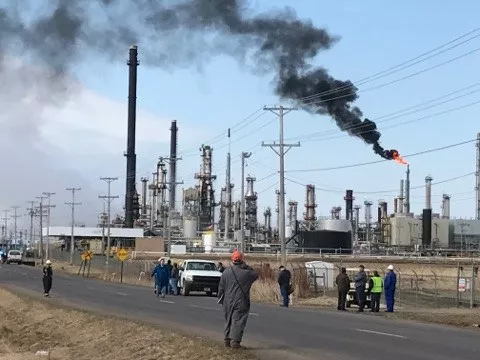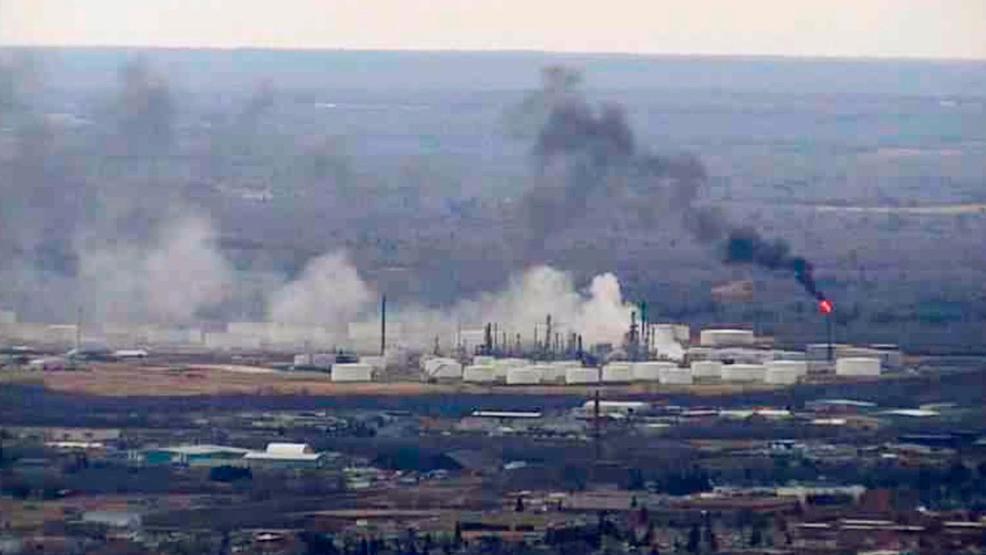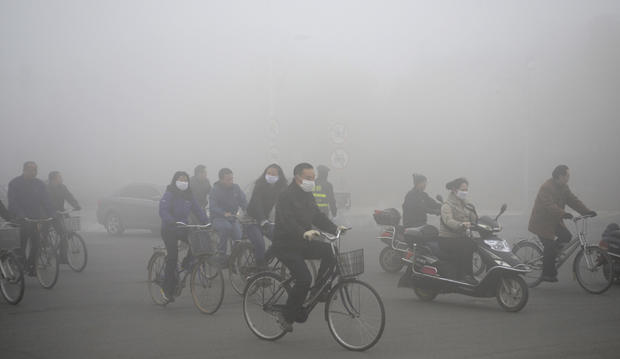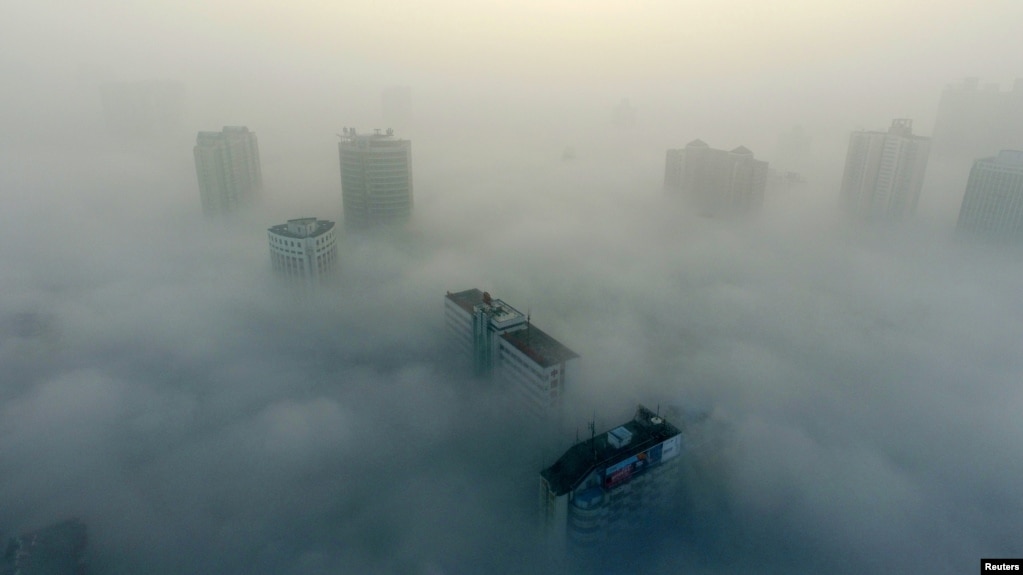The purpose of this thread is to educate and explain some key dangers about OIL and GAS refineries..
If they are located near communities, there is a disaster in the rafters, just waiting for an opportunity.. That opportunity can happen quite easily due to the nature of the refining process.
It's not a 'sensationalist' thread topic. It's real. It's something one would not expect to be present around a major interstate highway, or in a local neighborhood community.
This article comes from the Denver Post, and is hitting the news services:
https://www.denverpost.com/2018/04/1...neighborhoods/
The issue is with the gas called Hydrogen Cyanide, that same gas used in "exterminations".
It is coming from a SunCor refinery, at levels that the EPS considers hazardous.
There is a major interstate highway running past the refinery. The gas is emitted at low enough ground elevations, that it can be carried into the community and roadway, exposing thousands and thousands of drivers. And most certainly employees and residents and guests in the surrounding neighborhoods.
Hydrogen cyanide is lighter than air, but the winds in the area contain downdrafts, and seldom are just 'quiet and still'. Downdrafts are frequent and whip around the towers, piping, and platforms. The "stacks" are supposed to put the toxins out of ground level exposure, but they don't due to the winds and downdrafts.
The most deadliest gases are supposed to be "flared" off, a burning flame - the color of the flame usually indicates what type of gas is being flared. Flares in themselves emit many dangerous pollutants when the most toxic gas is burnt off.
The article:
Suncor oil refinery spews 8.5 tons a year of cyanide gas over low-income north Denver neighborhoods, state records show
Environmental attorneys and residents petition EPA and CDPHE to at least require disclosure of the hydrogen cyanide emissions
Hydrogen Cyanide BLOCKS the cells ability to exchange CO2 and absorb Oxygen. One suffocates to death with sufficient hydrogen cyanide gas being breathed in.CDPHE air quality control officials in January approved a change to Suncor’s air pollution permit that exempts the company from a federal requirement to disclose hydrogen cyanide emissions.
The officials set an emissions limit of 12.8 tons a year — higher than the 8.5 tons Suncor reported it emits — for the purpose of letting Suncor use a legal loophole that lets companies with permitted limits avoid disclosure of those emissions, a state document shows.
This CDPHE action overrode objections by Adams County Commissioners, who raised health concerns and said transparency is vital for emergency crews to be able to respond to potential hazards.
“It’s absurd to think state health officials would even consider granting permits to pollute more. The state health officials are completely failing to protect these neighborhoods.
And they are disregarding the cumulative impact of the many pollutants in the area,” Cross Community Coalition director Candi Cdebaca said.
Hydrogen cyanide is a colorless gas smelling faintly of almonds that at high exposure levels attacks the brain and heart, causing rapid breathing, convulsions and loss of consciousness, according to the U.S. Agency for Toxic Substances and Disease Registry.
Lower level exposures are linked to breathing trouble, headaches and enlarged thyroid glands. The Organization for the Prohibition of Chemical Weapons, established under the 1997 global Chemical Weapons Convention, classifies hydrogen cyanide as a chemical weapon.
Upwind of Denver, in Commerce City, Suncor emits the hydrogen cyanide from a fuel catalytic cracking unit that is part of the company’s crude oil processing. These units break down hydrocarbons to produce the gas and diesel that Suncor sells, a main source of fuels in Colorado and the region.
Suncor’s refinery is not the only refinery that emits hydrogen cyanide. The EPA has not set a federal limit for hydrogen cyanide, so fossil fuels companies have not been focused on reducing those emissions.
“Everyone who lives near Suncor, as well as Suncor employees, have been breathing hydrogen cyanide. If the state is going to set a limit for hydrogen cyanide, it needs to set a limit that protects public health,” said Earthjustice attorney Joel Minor, who filed the petition on behalf of north Denver residents.
“And we have these laws requiring disclosure for a reason,” he said. “People do have a right to know what they are breathing.”
EPA in its regulation of the nation’s oil refineries has focused instead on carbon monoxide, sulfur dioxide, particulates, nitrogen oxide, hydrogen sulfide and other pollutants.
As a result, data on hydrogen cyanide is limited.
CDPHE relied on data Suncor collected in 2015 to calculate hydrogen cyanide air concentrations around the refinery at 5 parts per billion, more than seven times higher than the EPA’s 0.7 ppb risk threshold, records show.
In Colorado, the only other apparent source of hydrogen cyanide pollution is a Goodrich Corporation plant in Pueblo where workers make aircraft parts. State records show this plant disclosing emissions of 942 pounds a year of hydrogen cyanide.
- Home
- Forum
- Chat
- Donate
- What's New?
-
Site Links

-
Avalon Library

-
External Sites

- Solari Report | Catherine Austin Fitts
- The Wall Will Fall | Vanessa Beeley
- Unsafe Space | Keri Smith
- Giza Death Star | Joseph P. Farrell
- The Last American Vagabond
- Caitlin Johnstone
- John Pilger
- Voltaire Network
- Suspicious Observers
- Peak Prosperity | Chris Martenson
- Dark Journalist
- The Black Vault
- Global Research | Michael Chossudovsky
- Corbett Report
- Infowars
- Natural News
- Ice Age Farmer
- Dr. Joseph Mercola
- Childrens Health Defense
- Geoengineering Watch | Dane Wigington
- Truthstream Media
- Unlimited Hangout | Whitney Webb
- Wikileaks index
- Vaccine Impact
- Eva Bartlett (In Gaza blog)
- Scott Ritter
- Redacted (Natalie & Clayton Morris)
- Judging Freedom (Andrew Napolitano)
- Alexander Mercouris
- The Duran
- Simplicius The Thinker





 Reply With Quote
Reply With Quote




















Bookmarks